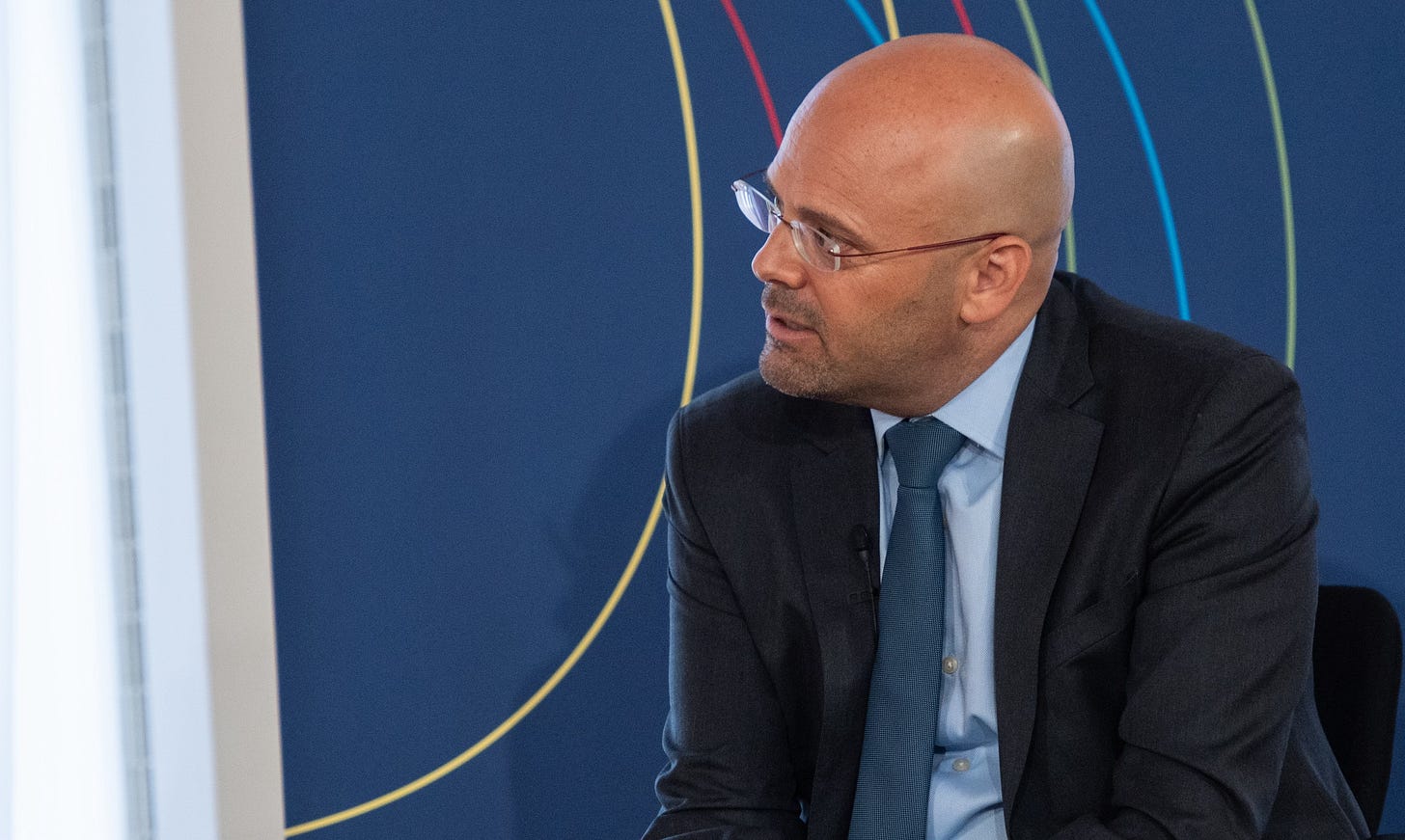The bank shot to save democracy
A conversation with Harvard political scientist Daniel Ziblatt about how democracies die — and how a pro-democracy movement could keep ours alive

Happy New Year, Ink readers!
As 2024 kicks off, we find ourselves in an epic year for democracy. Around half of the world’s people will vote in elections this year, many of them, as in the United States, complicated by authoritarian movements and candidates, disinformation, and a widespread erosion of faith in democracy’s power to improve people’s lives.
This existential moment for democracy in the United States (and elsewhere) will be at the heart of a revved-up Ink newsletter this year. We have big plans to explore this story from many angles, which I’m eager to unveil in due course.
But for now: I want to share with you a conversation I was thrilled to have the other day. It’s the perfect way to bring us into this testing year for democracy. It was with Daniel Ziblatt, the Eaton Professor of Government at Harvard University and director of the Minda de Gunzburg Center for European Studies. He’s a leading expert in the comparative study of democracy, and has concentrated in his recent work on understanding how democracies around the world have responded to challenges from antidemocratic forces. He is the author of two books written in collaboration with his Harvard colleague Steven Levitsky, How Democracies Die and Tyranny of the Minority.
I wanted to ask Ziblatt why, for all the rage we see against Trumpism, there isn’t a commensurate pro-democracy movement to speak of in the United States today. People speak of this as an existential moment for democracy, but it also feels like a business-as-usual moment in terms of how many citizens invest their time and energy.
We spoke about the delicate dance of selling democratic reform to a public that wants more seemingly immediate problems addressed, the emotional roots of rising authoritarianism, and why you should probably watch less cable TV (even or especially when I’m on it) and instead spend the time attending local community meetings — and perhaps even running for something.
When a democracy is at risk of dying, what does a movement to save its life look like? Do we have a pro-democracy movement resembling that in the United States today?
We have to think both short-term and long-term. There's the next 11 months, and then there's the long-term challenge.
Doing this emergency work of staving off the worst nightmare in the short run is necessary. That work is taking a defensive posture of how to preserve what we have. That involves having a broad coalition of people from the left to the right who all, despite all their differences, agree on a commitment to constitutional democracy.
And that's hard to do. I don't want to understate that. But in terms of the long term: I think we'll continue to be in this crisis each election, every four years, if not every two years, unless we begin to transform the institutions that I think are giving rise to this crisis.
In the last chapter of our book, Tyranny of the Minority, we do a deeper dive to find where the institutions have gone wrong and what can be done to address that. And so, we propose a set of reforms that are really difficult to achieve — institutional reforms, getting rid of the Electoral College, weakening the filibuster, making it easier to vote, term limits for judges. We have 15 proposals.
I see an imbalance between the professed level of outrage by very large numbers of people about Trump, about Trumpism, about democratic decay, about lies, and the lack of an actual movement. Can you talk about that imbalance?
There's a book by Eitan Hersh called Politics is for Power. He makes this case about how to move beyond what he calls political hobbyism: people watching MSNBC and feeling like they're engaged in politics. This is like the community I live in, a place where when you go take your dog for a walk at night, you see everybody's TVs are on and they’re watching MSNBC, but voter turnout for local elections is 15 percent. And so that's really a problem that afflicts both red states and blue states.
Institutional change is something that not everybody cares about. Or it's like a bank shot to get to what you want; it's an indirect route. If you're not happy with your life, the idea that we need to introduce, say, proportional representation is an abstraction. So how do you get people to think in institutional terms?
The way to do that is to link institutional reform to the issues that people really care about in their daily lives. Whether that's abortion rights or gun control; it could be economic policy.




